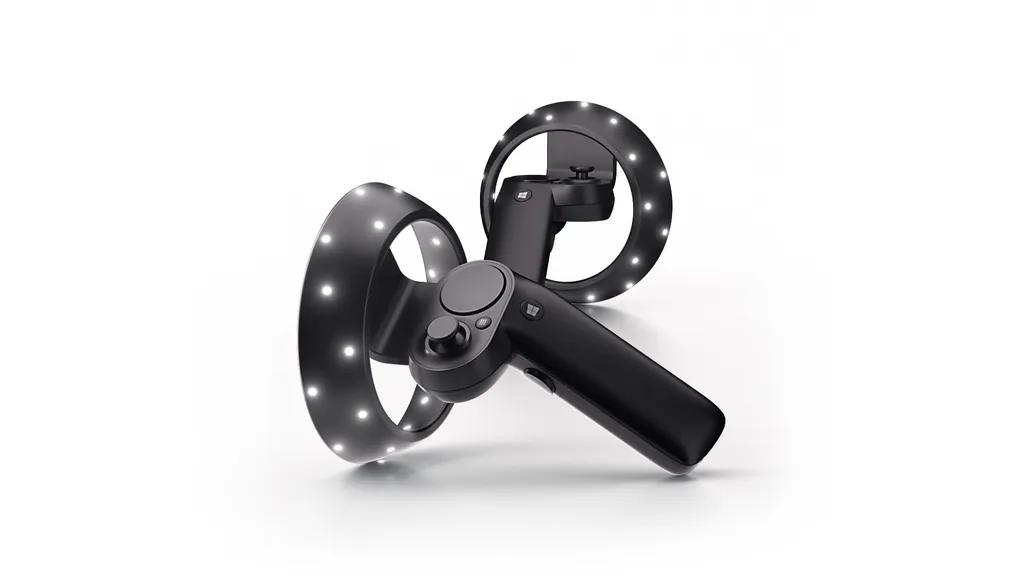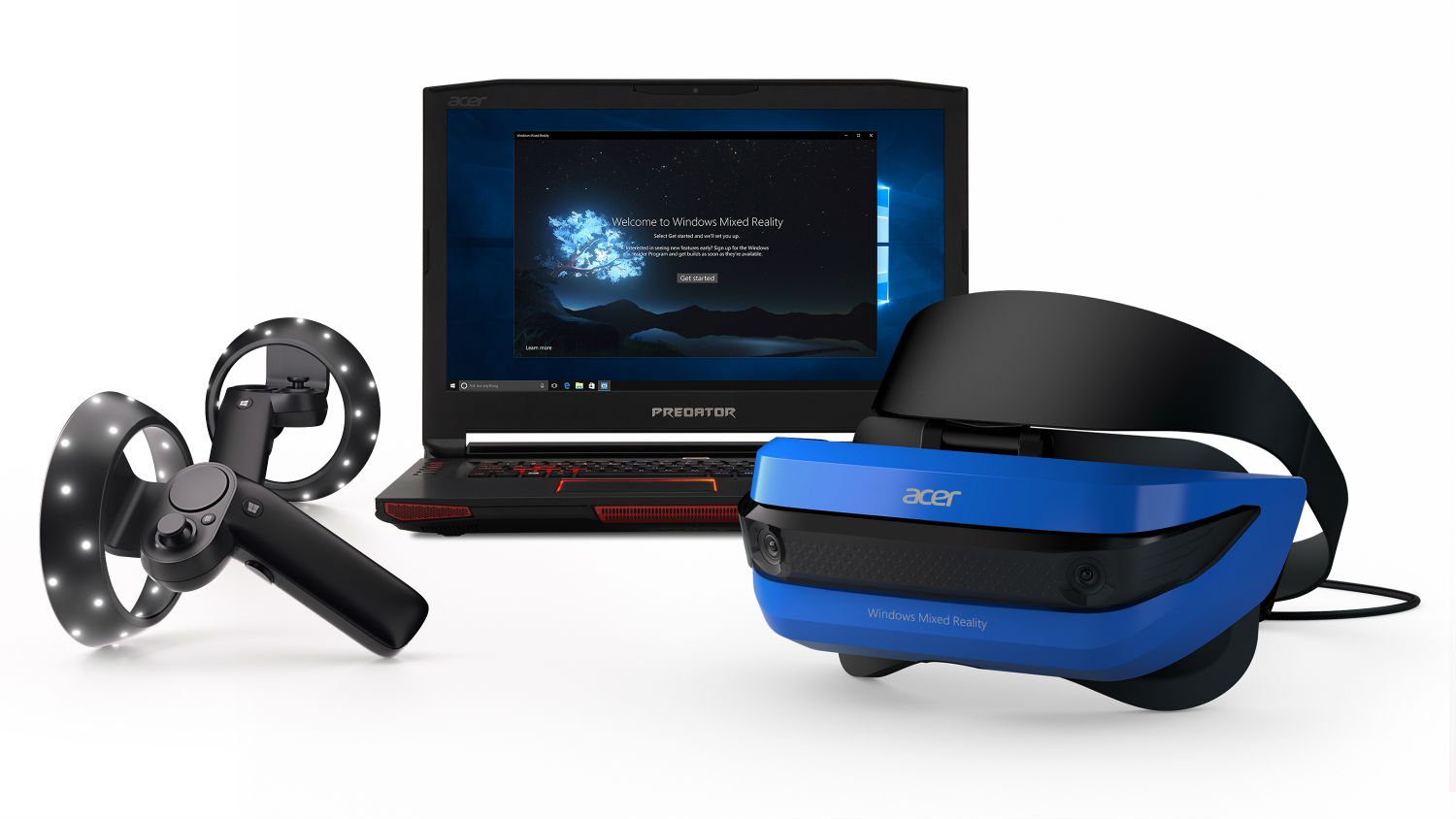In a keynote today Microsoft is revealing a long-awaited missing piece of its Windows mixed reality platform – motion controllers.
We still don’t have many details on the new controllers beyond the fact that they are said to offer full six degrees of freedom — like Oculus Touch and Vive’s wands — but that they need to be in sight of the headset’s outward-facing cameras and sensors to be fully tracked. According to Microsoft, the controllers would be shown on stage at its keynote but wouldn’t be available for hands-on demos at its Build developer conference this week.
The controllers will be bundled with an Acer mixed reality headset later this year for around $400. This brings the bundle $200 under the price of the Oculus Rift and its Touch controllers. While this price difference is significant, the Acer headset uses LCD panels which may result in significant differences to the overall experience when compared with the panels used in Oculus Rift and HTC Vive.
We obviously don’t have any hands-on experience with the new controllers — we aren’t even sure whether the lights depicted in the images supplied by Microsoft are visible during use — but it is likely the hand controllers will differ significantly from the current controllers on the market because of the different tracking technologies employed.
Inside-Out versus Outside-In
Microsoft’s HoloLens is a $3,000 entirely self-contained wearable computer that delivers augmented reality (AR) rather than virtual reality (VR). It augments your view by letting you see the world around you with digital elements layered into it. While packing an entire computer into the headset raises its price, HoloLens was also first to market with a breakthrough technology called inside-out tracking. Google, Facebook and others have yet to match this technology but are working hard at it.
Inside-out tracking means no external cameras (as used by Oculus Rift) or laser-emitting boxes (as used by HTC Vive) are needed. These current solutions on the market are called outside-in tracking because they essentially track an object’s precise location from the outside-in.
Microsoft is bringing its inside-out tracking pioneered on HoloLens to a whole line of VR headsets being produced by partners. The approach decreases the setup complexity of a system — making it easier to get in and out of VR — and should also decrease the cost of hardware because fewer parts are needed.
A Beautiful Moment With Outside-In Tracking
In a game called Longbow made by Valve Software you wield a bow and arrow and defend a castle from incoming minions. Behind you atop the castle wall there’s a fire burning. One of my favorite moments in VR is when I realized I could hold an arrow in one hand and, without looking, move the tip of the arrow over the fire to give myself a flaming arrow that can do more damage to the incoming minions.
The first time I did this with an HTC Vive I didn’t know if it would work. When I realized it did work, I found it incredibly empowering. I could survey the incoming wave of enemies like Legolas and, while calculating my next shot, catch my arrow on fire without looking away from the battlefield.
This may not be possible with Microsoft’s controllers, though. According to Microsoft the controllers have an inertial measurement unit (IMU) and use inverse kinematics to allow for some tracking when they’re not in the camera’s view.
What Will These Controllers Be Good For?
The scenario described above is not a common one . We are so often looking at our hands when we grab or move something. Still, the design of these controllers might not allow it, meaning at the very least developers will need to take into account whether or not someone is looking at an object to interact with it.
Overall, the question of what applications will be best suited for these controllers is top of mind. We can’t wait to get our hands on a pair so we can get a better picture of how they might be used.
Clarification: Post updated with additional information about how the controllers track.





























